
Advertising & Brands
-
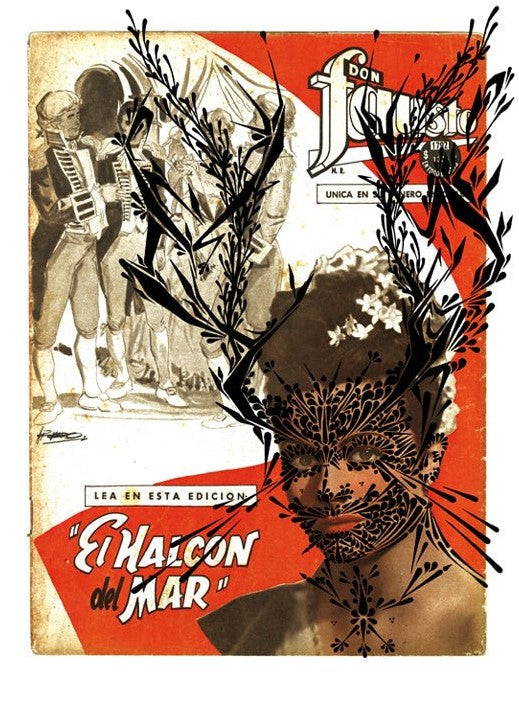
Stinkfish El Halcon del Mar Black Archival Print by Stinkfish
El Halcon del Mar- Black Limited Edition Archival Pigment Prints with Black Screen Print on 310gsm Fine Art Paper by Stinkfish Graffiti Street Artist Modern Pop Art. "I found this magazine in a second-hand bookstore in downtown Bogota. I used a traditional ink fine marker over the magazine cover. It is a Chilean magazine from 1959.I usually draw over these kinds of surfaces, like vintage records and magazine covers. It's inspired by my street works, I work on portraits mixed with free hand styles with a spray can." - Stinkfish
$134.00
-
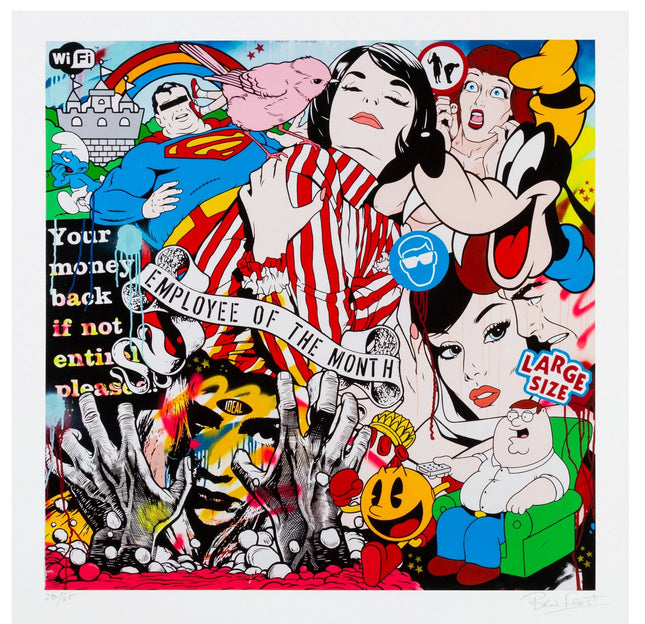
Ben Frost Employee of the Month Archival Print by Ben Frost
Employee of the Month Limited Edition Archival Pigment Fine Art Prints on Fine Art Paper by Graffiti Street Art and Pop Culture Artist Ben Frost. Ben Frost (b. 1975) Employee of the Month, 2014 Archival pigment print on Fine Art paper 17 x 17 inches (43.2 x 43.2 cm) (sheet) Ed. 28/65 Signed and numbered in pencil along the lower edge and published by 1xRUN, Detroit. Visual Dissection of Pop Culture "Employee of the Month" by Ben Frost is a limited edition archival pigment print that dissects and reassembles the fabric of pop culture within the context of street art and graffiti. This piece, created in 2014 and published by 1xRUN in Detroit, is a visually rich tapestry, infusing iconic imagery with subversive undertones characteristic of Frost's work. The print, measuring 17 x 17 inches, is a potent example of how street pop art and graffiti artwork can infiltrate the fine art world with its pulsating energy and color. Born in 1975, Frost has become known for his vibrant visuals that often incorporate elements from cartoons, advertising, and iconic brand imagery. "Employee of the Month" is no exception, featuring an amalgamation of figures from different realms of popular media. These images are not merely placed together but interwoven to create a narrative that speaks to the artist's and the viewer's shared cultural experiences. Subversion and Satire in Ben Frost's Art Frost's piece is a satirical nod to the recognition and rewards system prevalent in corporate culture, highlighted by the badge "Employee of the Month" amidst the chaotic backdrop of consumerist icons. The artwork delves into the themes of identity and recognition in a world saturated with branding and marketing messages. Each character and symbol is meticulously chosen to reflect the absurdity and sometimes the emptiness that can accompany the pursuit of accolades in a capitalist society. The print is signed and numbered by Frost, making each of the 65 editions a collectible piece of art. His signature not only authenticates the work but also marks it as an integral component of his artistic narrative, which often challenges the viewer to reconsider their relationship with the pervasive imagery of consumer culture. Interplay of Street Art and Archival Quality The use of archival pigment on fine art paper is a statement of the permanence Frost wishes to impart to his otherwise fleeting and ephemeral subject matter. While street art is often transient, the archival quality of these prints ensures that the vibrancy and message of the artwork endure. This duality mirrors street art and graffiti's short yet impactful nature – temporary in form but permanent in cultural impact. In summary, Ben Frost's "Employee of the Month" combines street art sensibilities and acceptable art practices, celebrating pop culture through a critical and often irreverent lens. This print stands as a testament to Frost's ability to create art that is both accessible and complex, offering a multifaceted critique of the world we navigate daily. Through his work, Frost continues to push the boundaries of street pop art and graffiti artwork, ensuring these genres' vital place within contemporary art discourse.
$1,099.00
-
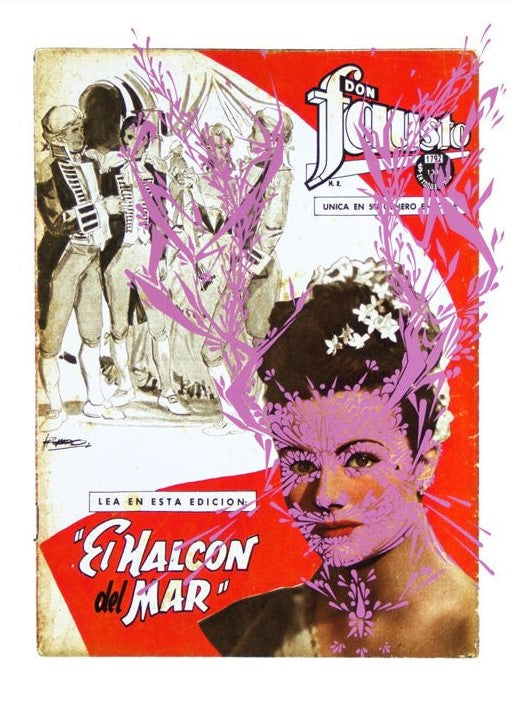
Stinkfish El Halcon del Mar Pink Archival Print by Stinkfish
El Halcon del Mar- Pink Limited Edition Archival Pigment Prints with Black Screen Print on 310gsm Fine Art Paper by Stinkfish Graffiti Street Artist Modern Pop Art. "I found this magazine in a second-hand bookstore in downtown Bogota. I used a traditional ink fine marker over the magazine cover. It is a Chilean magazine from 1959.I usually draw over these kinds of surfaces, like vintage records and magazine covers. It's inspired by my street works, I work on portraits mixed with freehand styles with a spray can." - Stinkfish
$323.00
-
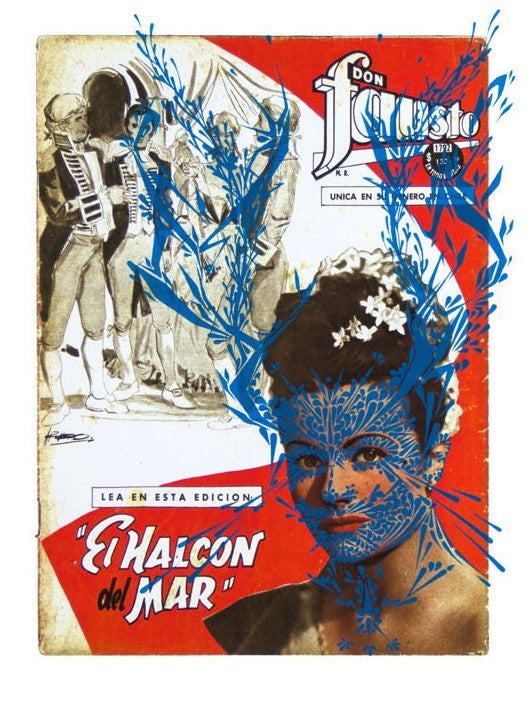
Stinkfish El Halcon del Mar Blue Archival Print by Stinkfish
El Halcon del Mar- Blue Limited Edition Archival Pigment Prints with Black Screen Print on 310gsm Fine Art Paper by Stinkfish Graffiti Street Artist Modern Pop Art. "I found this magazine in a second-hand bookstore in downtown Bogota. I used a traditional ink fine marker over the magazine cover. It is a Chilean magazine from 1959.I usually draw over these kinds of surfaces, like vintage records and magazine covers. It's inspired by my street works, I work on portraits mixed with freehand styles with a spray can." - Stinkfish Small dings or digs in the paper along top white margins that do not penetrate paper. Minimal. Affixed to Black Board, Unframed.
$125.00
-
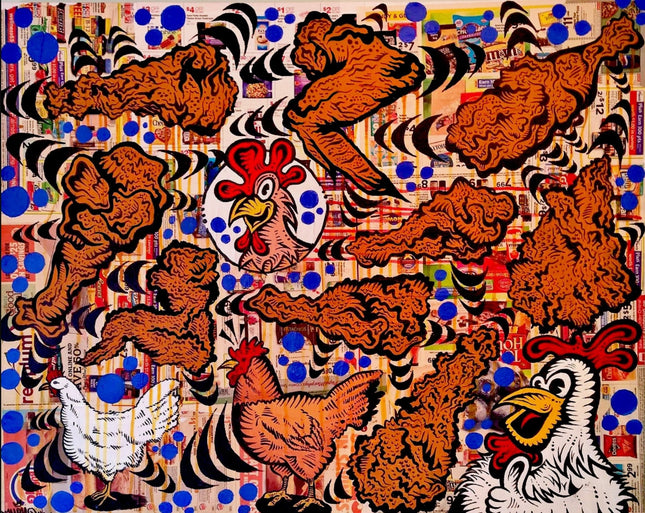
Damon Johnson Crown Fried Archival Print by Damon Johnson
Crown Fried Limited Edition Archival Pigment Fine Art Prints on Cotton Fine Art Paper by Graffiti Street Art and Pop Culture Artist Damon Johnson. 7 by 22 inch archival cotton paper edition of 10 signed and numbered. Crown Fried Archival Print by Damon Johnson
$256.00






